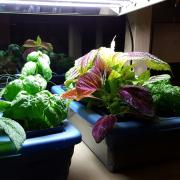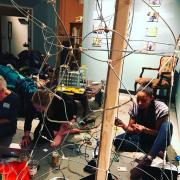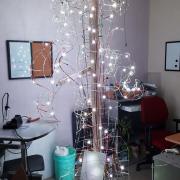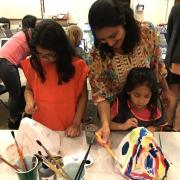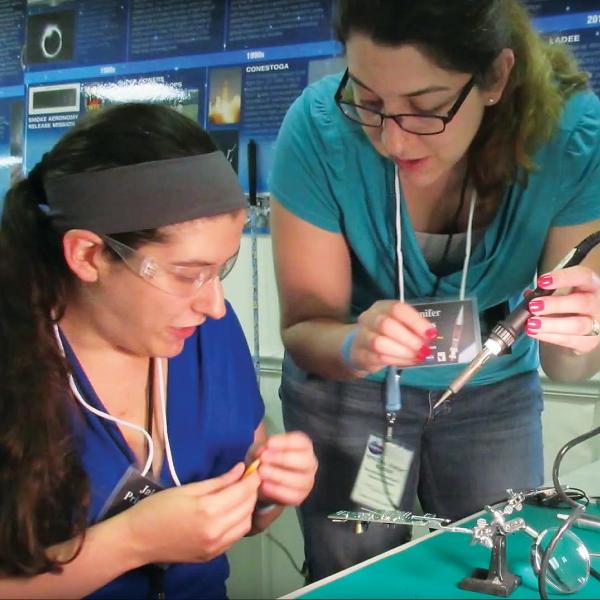
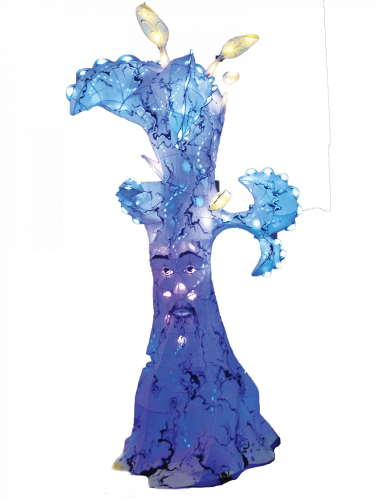 Graduate student Lila Finch’s luminous sculpture lends artistic form to scientific function. Supported by a gift from Oracle Academy in the ATLAS Laboratory for Playful Computation, her 9-foot creation, which resembles an expansive tree with outstretched branches, uses colored lights to visually demonstrate the health of a hydroponic garden growing one floor above in the Roser ATLAS Building. Sensors measuring moisture in the plants, light intake and other biological stats funnel data into a database, which communicates wirelessly with microcontrollers in the sculpture. Depending on whether the plants are thriving or withering, the colors and timing of the piece’s 230 LED lights change in response to the data. Finch, a PhD student in the Technology, Media and Society program, hosts workshops for youths to construct their own “expressive lanterns” and is designing curricula with science, art and computer science teachers to be implemented in middle and high school classrooms next year. They’re learning the basics of programming and communications, and how science and art can integrate to illuminate our world. “I wanted to think about how you could value art and science equally in learning and learn from one another,” Finch said. “The combination, I think, can be really useful for both fields.
Graduate student Lila Finch’s luminous sculpture lends artistic form to scientific function. Supported by a gift from Oracle Academy in the ATLAS Laboratory for Playful Computation, her 9-foot creation, which resembles an expansive tree with outstretched branches, uses colored lights to visually demonstrate the health of a hydroponic garden growing one floor above in the Roser ATLAS Building. Sensors measuring moisture in the plants, light intake and other biological stats funnel data into a database, which communicates wirelessly with microcontrollers in the sculpture. Depending on whether the plants are thriving or withering, the colors and timing of the piece’s 230 LED lights change in response to the data. Finch, a PhD student in the Technology, Media and Society program, hosts workshops for youths to construct their own “expressive lanterns” and is designing curricula with science, art and computer science teachers to be implemented in middle and high school classrooms next year. They’re learning the basics of programming and communications, and how science and art can integrate to illuminate our world. “I wanted to think about how you could value art and science equally in learning and learn from one another,” Finch said. “The combination, I think, can be really useful for both fields.


